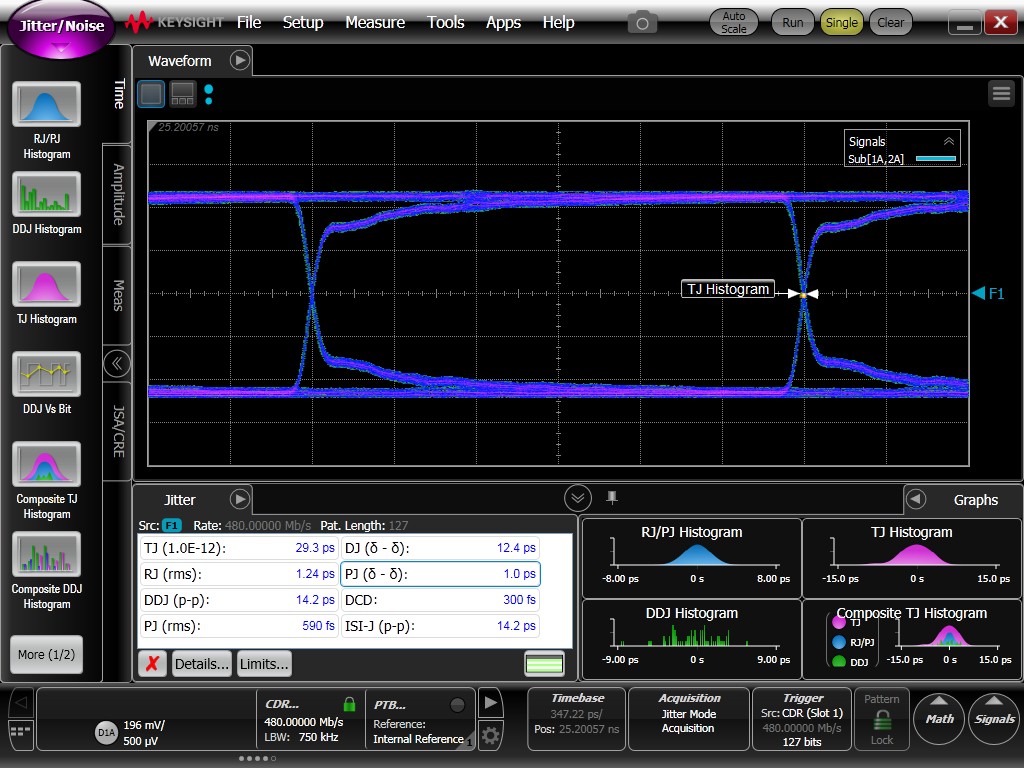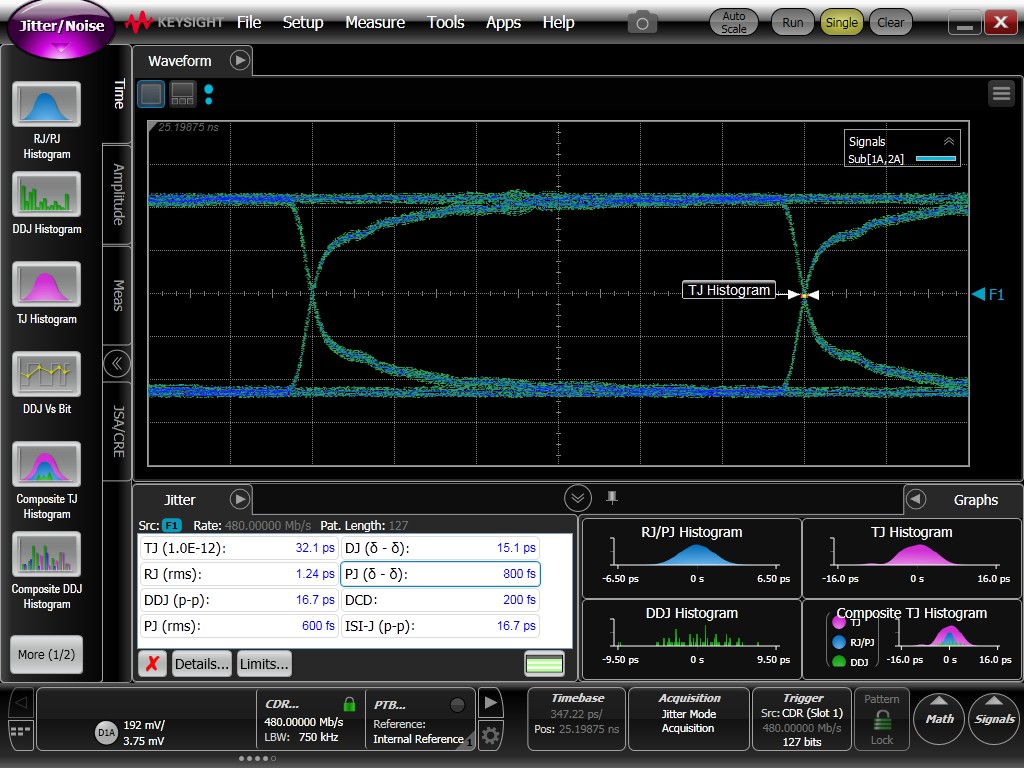SLASF92 july 2023 TMUXHS221LV
PRODUCTION DATA
- 1
- 1 Features
- 2 Applications
- 3 Description
- 4 Revision History
- 5 Pin Configuration and Functions
-
6 Specifications
- 6.1 Absolute Maximum Ratings
- 6.2 ESD Ratings
- 6.3 Recommended Operating Conditions
- 6.4 Thermal Information
- 6.5 Electrical Characteristics
- 6.6 High-Speed Performance Parameters
- 6.7 Switching Characteristics
- 6.8 Typical Characteristics – S-Parameters
- 6.9 Typical Characteristics – RON
- 6.10 Typical Characteristics – Eye Diagrams
- 18
- 7 Detailed Description
- 8 Application and Implementation
- 9 Device and Documentation Support
- 10Mechanical, Packaging, and Orderable Information
Package Options
Mechanical Data (Package|Pins)
- NKG|10
Thermal pad, mechanical data (Package|Pins)
Orderable Information
6.10 Typical Characteristics – Eye Diagrams
Figure 6-7 and Figure 6-8 show a side-by-side comparison of 480Mbps USB 2.0 HS signals through calibration traces (without the device) and a typical TMUXHS221LV channel. The attenuation of the vertical and horizontal eye opening through the device is minimal. Also, the mux device adds a negligible amount of jitter to the signals.
 Figure 6-7 Through Calibration Traces at 480Mbps
Figure 6-7 Through Calibration Traces at 480Mbps Figure 6-8 Through a Typical TMUXHS221LV Channel at 480Mbps
Figure 6-8 Through a Typical TMUXHS221LV Channel at 480Mbps